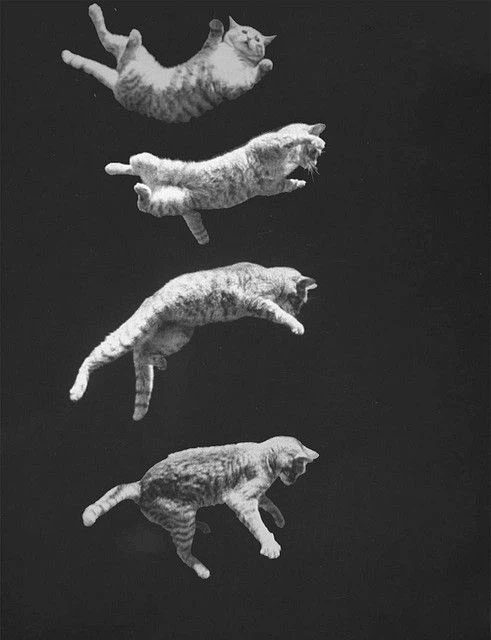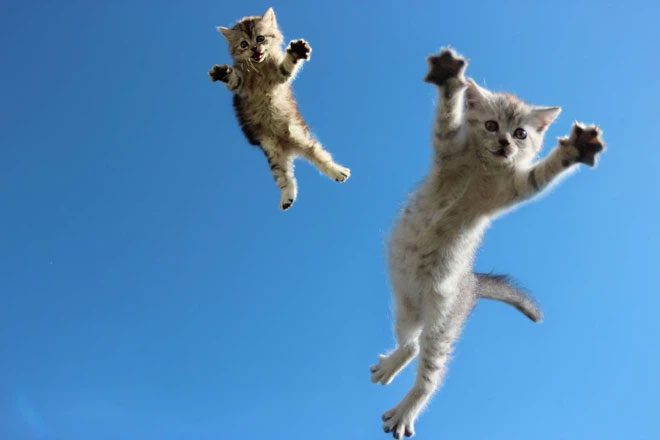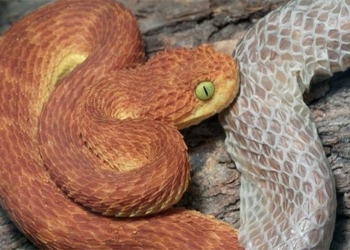You will never be able to count the number of falls from windows or balconies in a cat’s life. For us humans, sometimes it’s just: 1. This fact shows that cats can miraculously survive falls from incredible heights.
A cat fell from the 32nd floor of a building onto the streets of New York and only suffered a broken rib and a punctured lung. For cats, this injury is equivalent to just 2 days in the hospital before they can go home.
But in the end, what helps cats survive falls from such heights?
When Cats Do the Math
In a study conducted by the Journal of the American Veterinary Medical Association, scientists compiled data on 132 incidents in which cats fell from buildings ranging from 2 to 32 stories high.
The statistics showed that their average survival rate is 67%. However, that number rises to 90% if the cats receive timely emergency care and are taken to a veterinary clinic. What is puzzling is that the height of the fall does not always correlate with the cats’ chances of survival.
From the 2nd to the 7th floor, the higher the fall, the more severely the cats are injured. But scientists found that from heights of 7 stories and above, the injuries of the cats seem to plateau. They do not incur more severe injuries falling from the 32nd floor compared to the 8th floor.
And only when physics comes into play does the mystery get solved.

The average survival rate of cats is 67% when falling from high-rise buildings.
When a cat falls, there are essentially two forces acting on it. The downward gravitational force depends on the acceleration due to gravity (9.8 N/kg on Earth) and the mass of the cat. The other force is air resistance.
Air resistance increases with the cat’s falling speed and always pushes against its direction of motion. If we assume the cat falls straight down, the equation for the net forces acting on it in the y-direction would be:

For air resistance, ρ is the air density, A is the cross-sectional area of the cat, and C is the drag coefficient that depends on its shape.
You can see that when the cat begins to fall, its speed is 0, making the total force acting on the cat -m*g (just like a freely falling object). At this point, the cat will feel the gravitational force pulling it down.
The force acting makes the cat aware that it is falling. And instinctively, like when facing a threat, the cat will arch its back, puff up its fur, and stretch its legs down to prepare for landing.
Landing on its feet is a great option when a cat falls from a relatively low height. But it would be a bad idea if the fall distance is greater. The cat could break all four legs, which would limit its survival chances as it couldn’t move to safety after the fall or try to find food.
Therefore, when falling from greater heights, cats have opted for a different strategy. They spread their limbs like a flying squirrel and land on their bellies.

Cats spread their limbs like a flying squirrel and land on their bellies.
But how do cats sense when they should land on their bellies? Let’s return to the force equation. Ignoring the constants ρ, A, and C, we see that as the speed v increases, at a certain threshold, air resistance will counteract the force of gravity. At that point, the total force acting on the cat will equal 0. We call this the terminal velocity.
Scientists have run mathematical models to determine that a cat’s terminal velocity during its fall is about 97 km/h. And the distance required to reach this speed is 18-21 meters, equivalent to 6-7 stories.
The terminal velocity will make the cat feel that the total force acting on it is 0. At this point, it switches its landing strategy from feet to belly. By spreading its limbs, relaxing, and landing with a large surface area, the cat ultimately reduces the impact force on its body.
Typically, these cats only sustain injuries and almost always survive the fall, especially when they receive medical attention. In fact, there have been cats that fell from 26 stories and stood up immediately to walk home.
Don’t Drop Your Cat from the Window
I would love to label this article 18+, because if you aren’t mature enough, you might be tempted to get a cat for experimentation. In reality, the cat’s “flying” instinct does not always help them survive a fall.
Cats have evolved to have sharp claws that help them climb and grip surfaces like wood and trees. But that was before humans invented brick mortar and concrete. A cat can slip and fall from an apartment window because it forgets what material is beneath its feet.

Never drop your cat from your window just to see how they land.
Cats tend to be hyper-focused on anything that catches their interest. A bird or a flying bug just outside the window can excite them, and then a loud noise or strong wind can startle them and cause them to fall.
Brick mortar surfaces basically do not support a cat’s gripping ability. And the concrete ground below can be fatal if they do not land correctly. Do you still remember the statistics? One-third of cats will die if not rescued, and 10% even if they are taken to a veterinary clinic.
So the advice is never drop your cat from your window just to see how they land. Additionally, if you live in a high-rise apartment, you might consider installing window nets to protect your pets. If you don’t have them, please close your windows to keep your cat safe.





















































